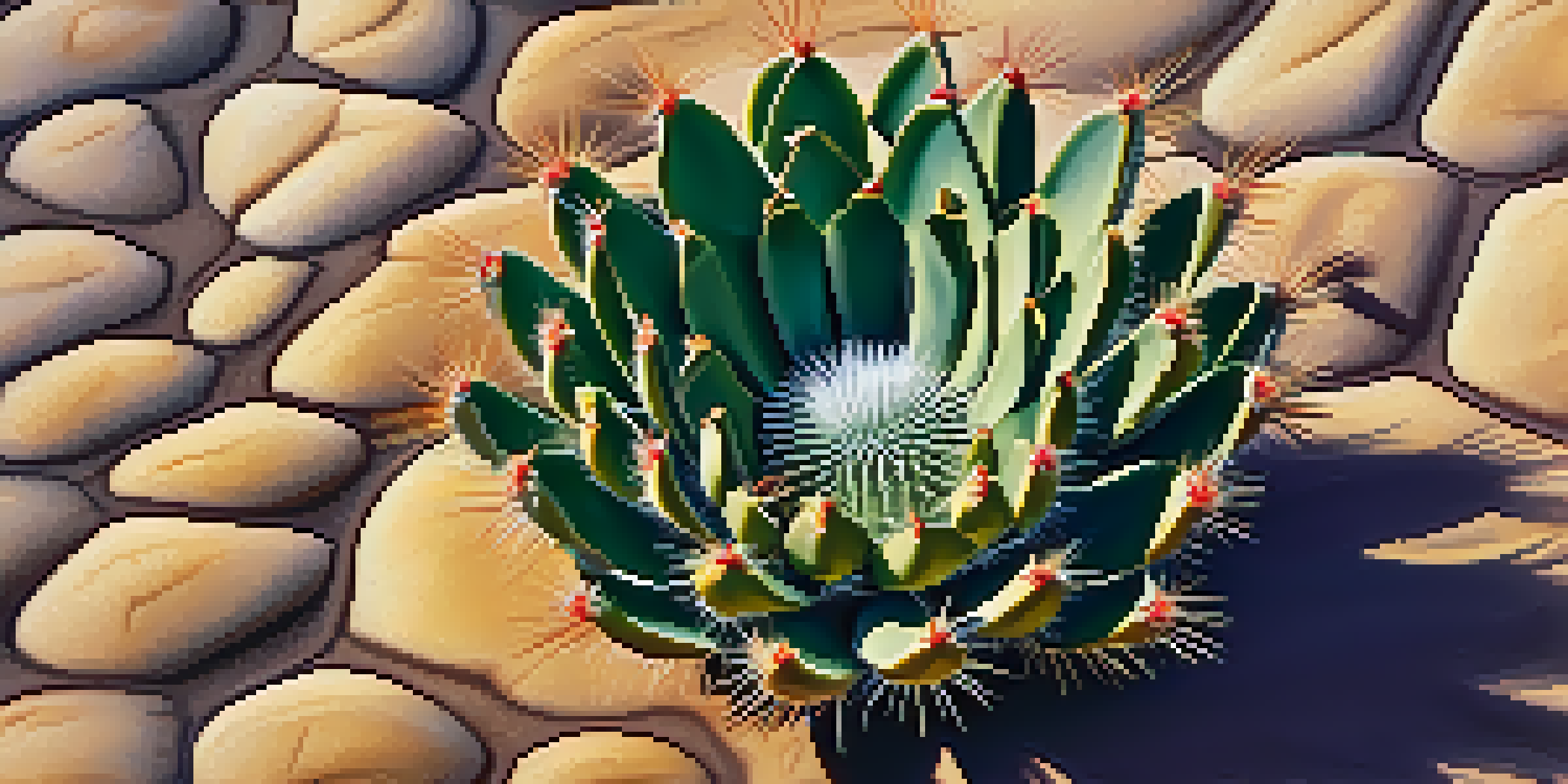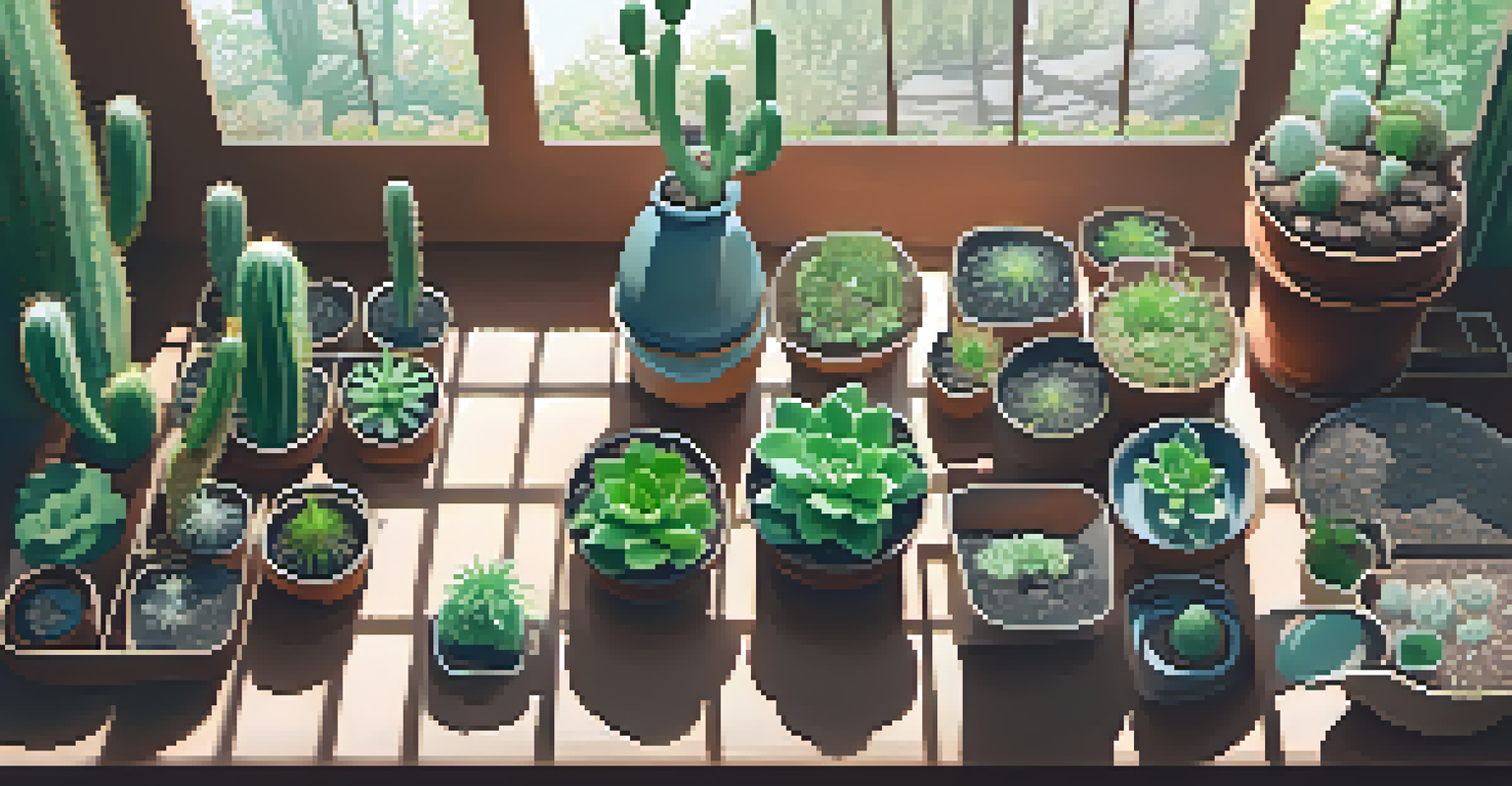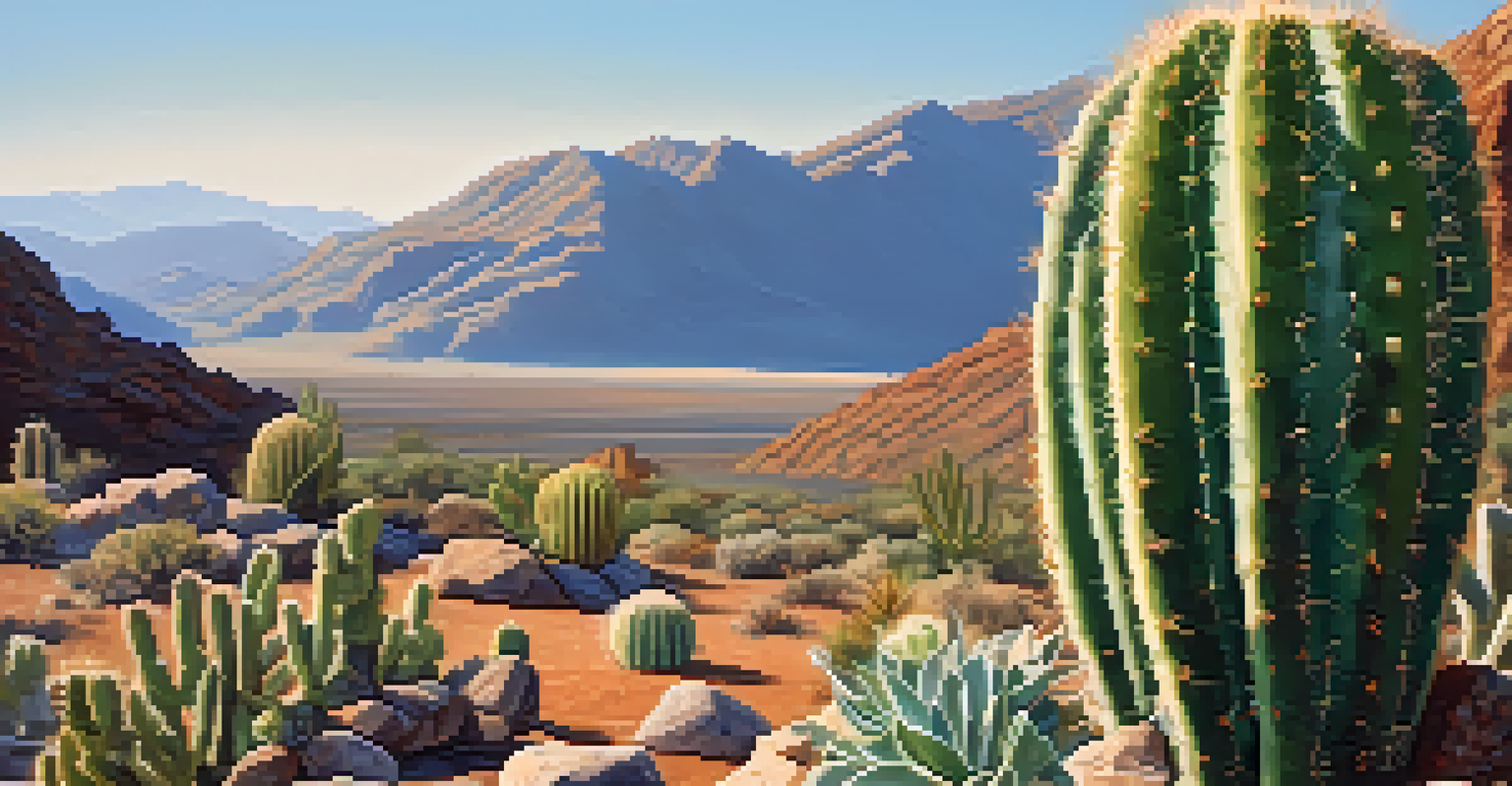Propagation Techniques for Peyote Cacti: A Guide

Understanding the Peyote Cactus and Its Unique Traits
Peyote cacti, scientifically known as Lophophora williamsii, are renowned for their psychoactive properties and unique appearance. These small, button-like cacti are native to Mexico and the southwestern United States, thriving in arid conditions. Understanding their characteristics is crucial for successful propagation, as they require specific conditions to flourish.
Nature does not hurry, yet everything is accomplished.
One of the defining traits of Peyote is its slow growth rate, which can be both a challenge and an advantage for cultivators. While it takes years for these cacti to reach maturity, their distinctiveness makes them highly sought after. Cultivators must be patient and attentive, as the right care can lead to healthy plants that are a joy to grow.
Additionally, it's important to note that Peyote is a protected species in some regions, so responsible cultivation practices are essential. Knowing the legal status of Peyote in your area can help ensure that you're propagating these fascinating cacti ethically.
Choosing the Right Environment for Propagation
Creating the ideal environment for your Peyote cacti is vital for successful propagation. These plants thrive in warm, dry conditions, so aim for temperatures between 70°F and 90°F (21°C to 32°C). A well-ventilated area with plenty of sunlight will help mimic their natural habitat and promote healthy growth.

Soil choice is equally important; Peyote prefers a well-draining soil mix to prevent root rot. A blend of cactus soil and perlite or sand can provide the drainage they require, ensuring that excess moisture does not linger. Remember, these cacti are adapted to survive in arid conditions, so less is often more when it comes to watering.
Peyote Cacti Require Careful Cultivation
Successful propagation of Peyote cacti demands patience, specific environmental conditions, and responsible practices.
Humidity levels should be kept low, ideally below 50%. If you live in a more humid area, consider using a dehumidifier or placing your plants in a location with good airflow. This will help maintain the dry conditions necessary for your Peyote to thrive.
Seed Propagation: Starting from Scratch
One of the most rewarding ways to propagate Peyote cacti is from seeds. This method allows you to experience the entire growth cycle, from tiny seeds to mature plants. Begin by soaking the seeds in water for about 24 hours to help initiate germination, then plant them in your prepared soil mix.
The greatest threat to our planet is the belief that someone else will save it.
Once planted, cover the seeds lightly with soil, and maintain a warm and humid environment to encourage germination. A plastic dome or a clear plastic bag can create a mini-greenhouse effect, trapping moisture and warmth. Keep an eye on the moisture level, ensuring the soil stays damp but not soaked.
Germination can take anywhere from a few weeks to several months, so patience is key. Once your seeds have sprouted, gradually acclimate the seedlings to lower humidity levels and brighter light to promote healthy growth. This foundation sets the stage for a thriving Peyote cactus.
Cutting Propagation: A Faster Alternative
If you're looking for a quicker method, propagation through cuttings can be an excellent choice. This technique allows you to take a healthy section of an existing Peyote cactus and encourage it to root. To begin, select a healthy, mature cactus and use a sharp, sterilized knife to cut a section, ideally a button, from the main plant.
After making your cut, let the cutting dry out for a few days to form a callous over the wound. This step is crucial, as it helps prevent rot once planted. Once calloused, you can place the cutting in your well-draining soil mix, burying it just enough to keep it stable.
Propagation Methods: Seeds vs. Cuttings
You can propagate Peyote cacti either from seeds for a rewarding long-term experience or through cuttings for quicker results.
Water the cutting sparingly at first, allowing the roots to establish before introducing more moisture. Over time, you’ll notice new growth, signaling that your cutting has successfully rooted and is ready to thrive in its new home.
Maintaining Your Peyote Cacti During Growth
Once you’ve successfully propagated your Peyote cacti, maintaining their health is essential for continued growth. Regularly check the moisture level of the soil, ensuring it dries out between waterings. Remember, overwatering is one of the most common mistakes new growers make, so always err on the side of caution.
Fertilization is also key, but keep it minimal. A diluted cactus fertilizer can be applied during the growing season, typically in spring and summer, to provide essential nutrients. However, be cautious not to over-fertilize, as this can lead to unhealthy growth.
Lastly, keep an eye out for pests and diseases. Regular inspections can help you catch any issues early, allowing for prompt treatment. Healthy plants not only look great but also provide a more successful propagation experience.
Common Mistakes to Avoid in Peyote Propagation
Even seasoned gardeners can make mistakes when propagating Peyote cacti. One common error is neglecting proper drainage; without it, your plants are at risk of root rot. Always ensure that your pots have sufficient drainage holes and that your soil mix is tailored for cacti.
Another mistake is overwatering, which can lead to a range of problems, from mushy stems to fungal infections. It's better to underwater than overdo it, especially in the early stages of growth. You can always increase watering frequency as the plants mature and their needs change.
Ethics in Peyote Cultivation Matter
Understanding the cultural significance and practicing sustainable sourcing is essential when cultivating Peyote cacti.
Lastly, many growers underestimate the importance of light. Peyote cacti require plenty of sunlight, but too much direct sun can scorch young plants. Finding the right balance is crucial; consider providing filtered light during the hottest parts of the day while allowing full sun exposure in the morning and late afternoon.
Ethical Considerations in Peyote Cultivation
As interest in Peyote cultivation grows, it's essential to consider the ethical implications of propagating this sacred plant. Many indigenous communities have used Peyote for centuries in spiritual practices, and respecting this heritage is crucial. Before diving into cultivation, take time to understand its cultural significance and the potential impact of your actions.
Additionally, responsible sourcing is vital. Ensure that your seeds or cuttings come from reputable suppliers who practice sustainable harvesting methods. Avoid taking plants from the wild, as this can contribute to the decline of native populations and threaten the ecosystem.

By approaching Peyote cultivation with respect and mindfulness, you can enjoy the process while honoring the traditions surrounding this remarkable cactus. Ethical cultivation not only benefits you as a grower but also supports the preservation of this unique plant for future generations.